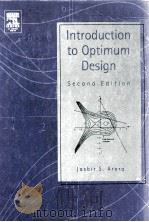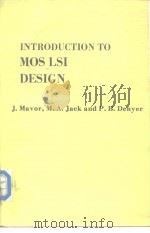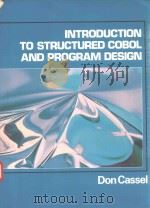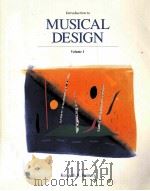《Introduction to Aircraft Design》
| 作者 | John P. Fielding 编者 |
|---|---|
| 出版 | Cambridge University Press |
| 参考页数 | 263 |
| 出版时间 | 1999(求助前请核对) 目录预览 |
| ISBN号 | 0521657229 — 求助条款 |
| PDF编号 | 813842578(仅供预览,未存储实际文件) |
| 求助格式 | 扫描PDF(若分多册发行,每次仅能受理1册) |
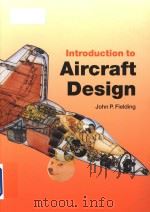
1Introduction1
1.1 Why another aircraft design book?1
1.2 Topics2
1.3 The design process2
2Why should we design a new aircraft?7
2.1 Market surveys7
2.2 Operator-derived specifications11
2.3 Specification for a close air support aircraft12
2.4 Airline specification for a 150-seat airliner13
3Why is it that shape?- Civil aircraft19
3.1 Background19
3.2 Civil aircraft types24
4Why is it that shape?-Other types37
4.1 Military aircraft types37
4.2 Rotorcraft and V/STOL aircraft50
5What’s under the skin?- Structure and propulsion55
5.1 General55
5.2 The structure55
5.3 Propulsion - the primary power system63
6What’s under the skin?- Airframe systems73
6.1 Secondary power systems73
6.2 The fuel system80
6.3 Furnishings82
6.4 Safety installations83
6.5 Landing gear installations84
7What’s under the skin?- Avionics,flight control and weapon systems89
7.1 Avionic systems89
7.2 Flight control systems96
7.3 Weapon systems100
8Why do aircraft cost so much?109
8.1 General109
8.2 Acquisition costs (the costs of buying or acquiring the aircraft)109
8.3 Civil aircraft operating costs115
8.4 Military aircraft life-cycle costs116
8.5 The costs of reliability and maintainability118
9What help can I get?- Bibliography and computer-aided design129
9.1 Aircraft design bibliography129
9.2 Relevant data sheets131
9.3 Computer design tools135
9.4 The integration of computer tools as part of concurrent engineering140
9.5 Classic computer-aided design systems141
10The shape of things to come - Should the project continue?149
10.1 Introduction149
10.2 Conceptual design definition149
10.3 Comparison and choice150
10.4 Simple decision-making techniques151
10.5 Example of a conceptual aircraft design definition description - The Cranfield A-90153
10.6 Progress of the A-90 project beyond the conceptual design stage161
11What can go wrong?- Some lessons from past aircraft projects,and a glimpse into the future163
11.1 Introduction163
11.2 Aircraft that suffered from requirements that were too restrictive,too ambitious or were changed during development163
11.3 Projects that were overtaken by events167
11.4 A step too far or too soon?171
11.5 Some challenging future projects174
11.6 Conclusions177
Appendix A - Useful aircraft design data179
A1Introduction179
A2 US/UK nomenclature179
A3 UK and US/SI conversion tables and airspeed charts180
A4 Aircraft leading data tables183
A5 Power plant data196
A6 Aerodynamic data213
A7 Structures and materials data220
A8 Landing gear data222
A9 Aircraft interior data223
A10 Aircraft weapons238
Appendix B - A-90 parametric studyExample - the A-90 500-seat airliner243
B1 Introduction243
B2Landing field distance243
B3 Take-off field length245
B4 Second segment climb246
B5 Missed approach247
B6 Cruise performance248
B7 Ceiling with one engine inoperative252
B8 Arrival at the match point253
Appendix C - The prediction of aircraft reliability and maintainability targets255
C1 Introduction255
C2Commercial aircraft dispatch reliability prediction255
References259
Index261
1999《Introduction to Aircraft Design》由于是年代较久的资料都绝版了,几乎不可能购买到实物。如果大家为了学习确实需要,可向博主求助其电子版PDF文件(由John P. Fielding 1999 Cambridge University Press 出版的版本) 。对合法合规的求助,我会当即受理并将下载地址发送给你。
高度相关资料
-

- AIRCRAFT INSTRUMENT DESIGN
- SIR ISAAC PITMAN & SONS
-
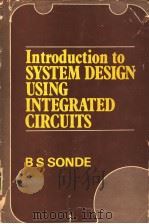
- INTRODUCTION TO SYSTEM DESIGN USING INTEGRATED CIRCUITS
- WILEY EASTERN LIMITED
-

- INTRODUCTION TO COMPOSITE MATERIALS DESIGN
- 1999 Taylor & Francis
-

- INTRODUCTION TO DIGITAL COMPUTER DESIGN
- 1972 MC GRAW HILL
-
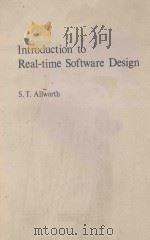
- INTRODUCTION TO REAL-TIME SOFTWARE DESIGN
- 1981 THE MACMILLAN PRESS LTD
-

- AN INTRODUCTION TO THE THEORY OF AIRCRAFT STRUCTURES
- 1960 EDWARD ARNOLD(PUBLISHERS)LTD.
-

- INTRODUCTION TO REINFORCED CONCRETE DESIGN
- 1943 COPYRIGHT
-

- INTRODUCTION TO MUSICAL DESIGN VOLUME 2
- 1992 WM.C.BROWN PUBLISHERS
-
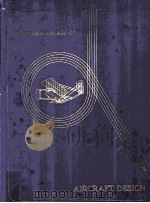
- FUNDAMENTALS OF AIRCRAFT DESIGN
- 1975 SCHOOL OF ENGINEERING
-
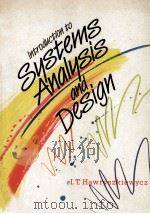
- Introduction to SYSTEMS ANALYSIS AND DESIGN
- 1988 Prentice Hall of Australia Pty Ltd
提示:百度云已更名为百度网盘(百度盘),天翼云盘、微盘下载地址……暂未提供。➥ PDF文字可复制化或转WORD
